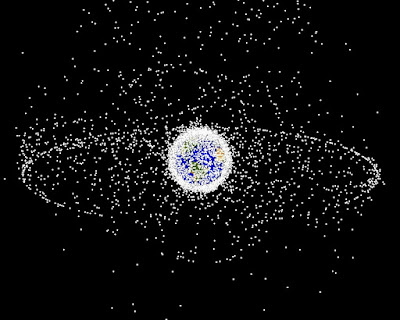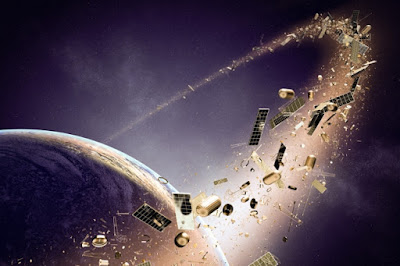Space Debris | Junk in Space
Introduction
Space Space Space!!! The terms Solar solstice and Space elevator were explained in previous blogs. Now we are gonna see about Space debris.
Have you ever wondered, what happens to the parts of a rocket that fall off???
What does actually space debris mean???
Is there any possibility to clean up space debris??? If so, How???
These are some general questions that will revolve around everyone’s mind…Now you will get some clarity about those questions, let us move into the topic…
What is Space debris?
Space debris ( known as space junk), is a piece of machinery or junk left by humans in space, generally in earth’s orbit, which are no longer useful. These materials can be of large objects such as heavy satellites that have failed or left in the earth’s orbit after the mission. It can also be small things like paint flecks, solidified liquids, and junks that have fallen from a rocket. Some of the human-made junks have been left on the moon too. Most of the junks are present in low earth orbit, i.e within 2000 km of earth’s surface, however, some of the junks can be found in geostationary orbit, i.e 35,786 km above the earth’s equator.
How much Space debris is present?
More than 25,000 orbital debris larger than 10 cm is known to exist. The rough population of particles between 1 and 10 cm in diameter is approximately 5,00,000. The number of particles larger than 1mm exceeds more than 1,000 lakhs. As of January 1, 2020, the amount of particles metering around the earth exceeded 8,000 metric tons.
How does space junk get into space?
All space debris is an outcome of launching objects from earth, and it remains in orbit until it re-enters the atmosphere.
A few objects in lower orbits can return quickly. They often re-enter the atmosphere within a few years and most of the parts burn up- so they don’t reach up ground. But debris or satellites left at higher altitudes of 36,000 km -where communications and weather satellites are often placed in geostationary orbits. Many space junk results from collisions in orbit. When two or more satellites collide, thousands of new pieces, creating a lot of debris. But many countries have used missiles to practice blowing up their own satellites. This leads to producing new dangerous new debris.
Can we clean up the space debris?
Yes, of course, Space debris can be cleaned and removed from space.
These are some methods that can clean up space junk:
1. Giant Lasers: Using high-powered pulsed lasers based on Earth to create plasma jets on space debris could cause them to slow down slightly and then re-enter and either burn up, in the atmosphere or fall into oceans.
2. Space balloons: The GOLD system(Gossamer Orbit Lowering Device), uses an ultra-thin balloon, which is inflated with gas to the size of a football field and then attached to large pieces of space debris.
3. Self-destructing janitor satellites: Swiss researchers at the Federal Institute of Technology have designed a small satellite, known as CleanSpace One, which could find and then grab onto space junk with jellyfish-like tentacles.
4.Recycling satellites: Instead of just trashing space debris, some dead satellites could be ‘mined’ by other satellites for usable components. DARPA’s Phoenix program could create new technology to enable the harvesting of some valuable components from satellites in so-called ‘graveyard’ orbits.
However, these methods are only useful for large satellites orbiting the earth. There isn’t really a way for us to pick up smaller pieces of debris such as bits of paint and metal. We just have to wait for them to naturally re-enter Earth’s atmosphere.
Will Space debris cause a problem in the future?
Yeah, It could well be. Several companies are planning vast new sets of satellites, called Mega Constellations, that will beam the internet down to the earth. Some companies such as SpaceX and Amazon, plan to launch thousands of satellites to achieve global satellite internet coverage. If successful, there may be an additional 50,000 satellites in orbit. This also means a lot more collision avoidance maneuvers will need to be done.
By making sure that satellites are removed from orbit in a reasonable amount of time once they are no longer active, we can mitigate the problem of space junk in the future. Earth’s orbit allows us to study our planet, send and receive communication, and more. It’s important that we use it sustainably, allowing future generations to enjoy its benefits too.




